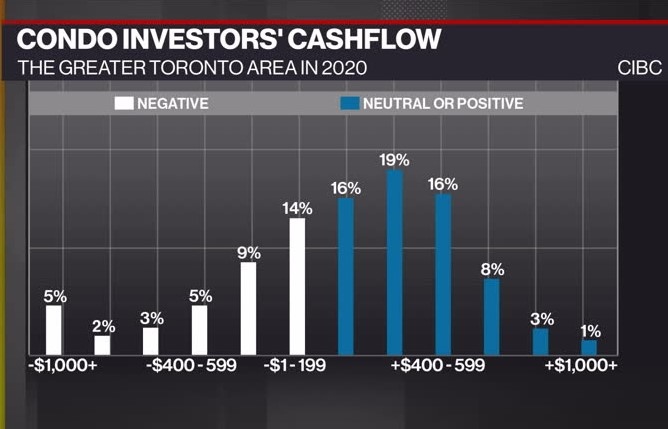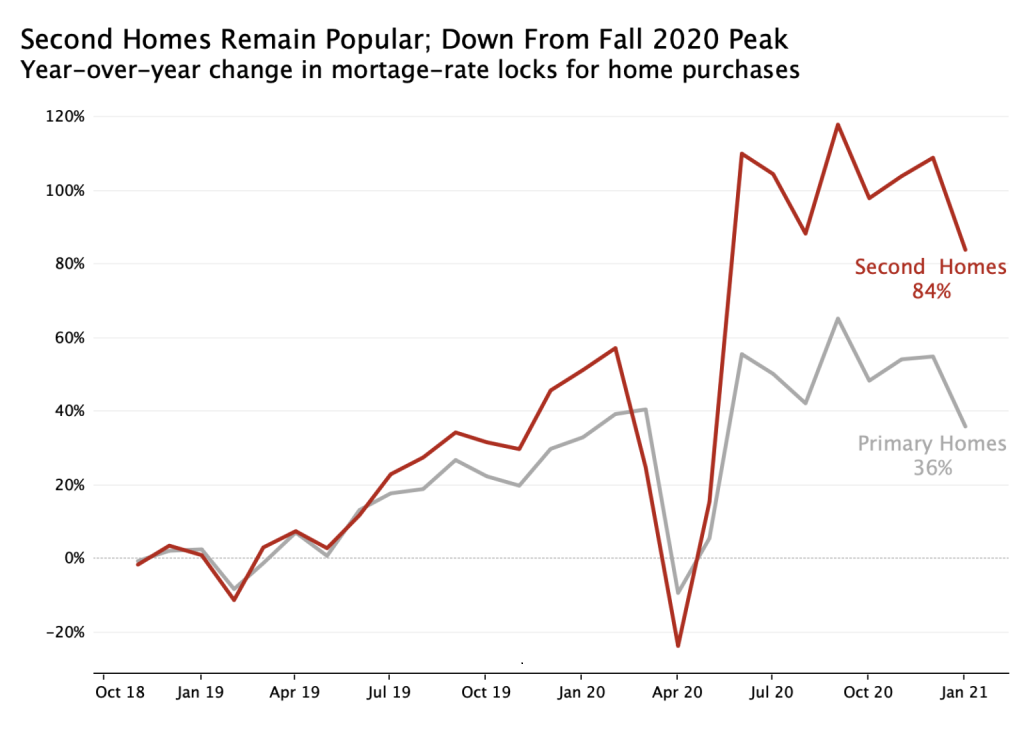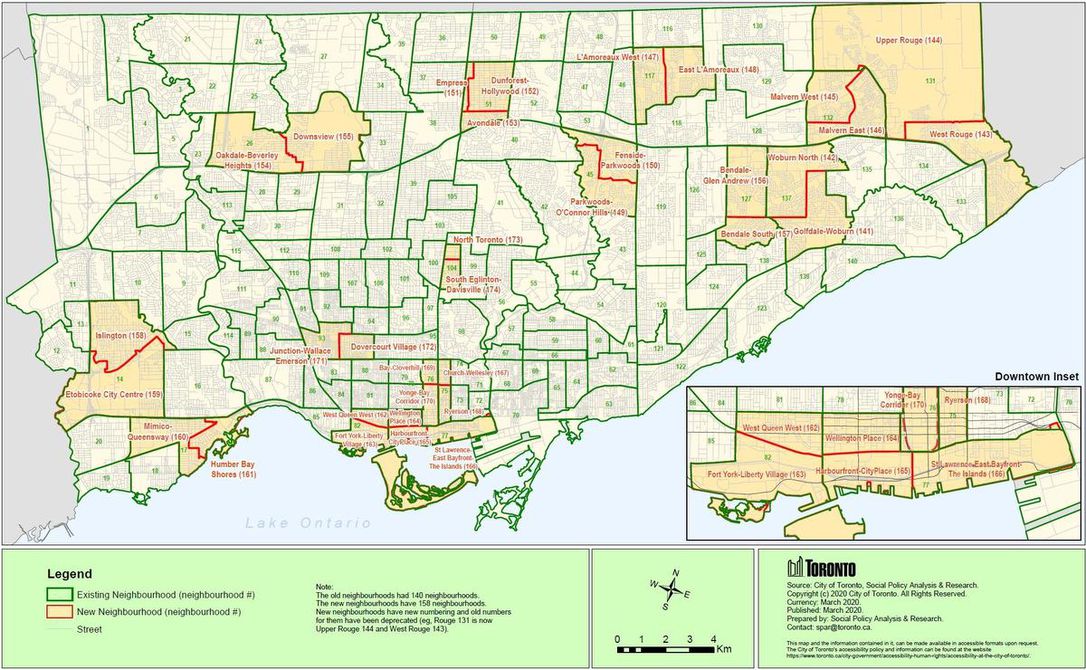It’s no secret that the Toronto housing market is one of the most competitive real estate markets in Canada. In January 2021, statistics from the Canadian Real Estate Association (CREA), showed that home sales have set another all-time record, but statistics are also showing a lack of new listings. Since we’re just coming out of the second COVID-19 lockdown in Ontario, trepidation among sellers is understandable. But as we emerge from a winter spent in lockdown, sellers may start feeling better about listing their homes as the GTA real estate market continues to boom and soar to new heights.
What the Canadian Real Estate Association is saying
According to the MLS graph, in 2019, the benchmark price of a home in the Greater Toronto Area was just over $763,000 compared to January last year, where the average price was just over $927,000. This means the price has increased by 21% in 12 months. Because of the rapid price rise, people are able to take advantage of the market and sell their homes at a reasonable price.
According to the Canadian Real Estate Association (CREA), the same graph shows Toronto home prices have risen by 128% in the last ten years. The price for property in the GTA was only $405,000 in 2011 on the MLS graph. The City of Toronto has seen major growth in the last decade, but the price range of houses has made it more unattainable for residents to put a down-payment on a stand-alone single-family home.
However, members of CREA and many real estate professionals are predicting the demand for housing in Toronto will rise post-pandemic and post-vaccination. Currently, interest rates are at an all-time low and property value is increasing at a rapid rate. But the lack of listings is causing bidding wars and that’s just driving the price increase much higher. In contrast, the housing market is less competitive with the border remaining closed as buyers don’t have to fight with people coming to Canada from out of the country and buying property.
What’s more interesting is looking at the average home price across Canada. Members of CREA say the year over year (Y-O-Y) increase in Canada is affected by areas like Vancouver, British Columbia and the GTA. The national sale price in January 2021 was just over $628,000. But if you take away areas like Vancouver, British Columbia and the GTA, the average goes down by $129,000. The Y-O-Y increase was calculated using CREA’s trademark MLS multiple listing service graph to assess and graph housing trends across the Greater Toronto Area and Canada.
Toronto housing market options
Maybe you’re not ready to commit to a million-dollar stand-alone house in the GTA, and that’s totally understandable. Population growth has drastically impacted price increases in the past few years. However, there are a number of other options for someone looking to break into the Toronto real estate game.
Since house prices are so steep, considering the condo market is a great opportunity for many first-time buyers. In the Greater Toronto Area, condos are being built in the blink of an eye, plus, the price tag for condos is more appealing than houses. One of the hottest real estate trends in 2021 is pre-construction condos. They can take up to three years to build but are a safe long-term investment. The condo market in Toronto is booming and with house prices rising, investing in the condo market is more appealing than ever for people looking to find affordable housing.
Another interesting alternative to stand-alone homes is townhouses. In the city of Toronto, townhouse prices are lower than stand-alones, but not by much. However, with the demand for rental housing increasing, snatching up these listings could help you see a profit if you’re choosing to convert your townhome into a rental unit. With housing prices going up, rental demand is increasing and investing in this property type can help you in the long run.
Consult with home sales professionals
Working with a realtor can help you navigate multiple listings, mortgages and interest rates, along with real estate prices in Toronto, Canada. For first-time homebuyers searching through new listings and viewing Toronto house prices can be daunting but guidance from professionals who are members of the Canadian Real Estate Association can give you an edge in the Toronto housing market and help you pass your stress test as it’s important to keep your stress test expectations realistic.
Real estate professionals include mortgage brokers, not just realtors. This also means you’ll have to complete an Ontario mortgage stress test to ensure you can keep up with mortgage rates and interest rates while still being able to provide a sizeable down payment. Real estate professionals can help you keep up with mortgage rates outlined by The Bank Of Canada and vice versa. They can also help you navigate your much-dreaded mortgage stress test.
Real estate professionals can help you determine your qualifying rate and help you find a property listing at prices that are more reasonable. However, the property market in the GTA is one of the highest in Canada and population growth is only contributing to the price growth even more. Professionals who are members of CREA can help you find housing markets that may be more in your price range if you’re willing to change your city.
Post-pandemic real estate demand
Once people get more comfortable in post-pandemic life, the price trend is going to continue. The demand for property is going to increase further and, therefore, so will the prices. The average price of new listings in Canada is often less than the selling price of properties because of intense bidding wars that are become harder for first-time buyers to win.
The house price listed on real estate websites is often less than what the buyer actually pays. Sellers can list their house for one price and sell their house for $50,000 over-asking. And since bidding wars are so prevalent in today’s real estate landscape, sellers are also listing their homes for cheaper than the amount they’re expecting to receive. Sales of new homes in the GTA have temporarily halted because of lockdown restrictions and border closures, but as soon as we see that change in our society, price growth is going to contribute to an even higher Toronto housing landscape.
Listings waiting for recovery
A number of listings are on the sidelines waiting for the market to open up even further and wait for demand to increase so their property can make the most for them. A realtor may even suggest waiting to list your property now because the GTA real estate market is being slated to expand and grow within the next year. Depending on property type, housing prices and the sales of houses will continue to rise in 2021.

Increasing sales activity
Last year, Canada saw a huge dip in the number of homes sold during the onset of the COVID-19 pandemic. Although demand remained high, listings dwindled as homeowners were more worried about strangers coming into their property. The Bank of Canada quickly cut interest rates to cushion the blow and regardless, the real estate landscape in Toronto, and across Canada, thrived. The Bank of Canada also put in motion a couple of programs to help lenders during the pandemic, which increased overall sale activity in the housing market.
As Canada and Toronto put economic recovery strategies to work in the coming year, home prices will continue to rise to help the economy. The Ontario Fair Housing Plan (OFHP) was created to help cool the red-hot real estate market, but the impact of the pandemic will inevitably contribute to home price growth and economic recovery nationwide. But again, working with a realtor can help mitigate some of the stress and help you in your sale and real estate endeavours so you can reach your goals.
Hot Toronto neighbourhoods
The red-hot Toronto housing landscape can be intimidating, but looking at some trending neighbourhoods can help you get excited about the opportunity of homeownership even if house prices aren’t extremely desirable.
The Beaches
The Beaches is a transit-friendly neighbourhood in Toronto with house prices hitting over a million dollars. However, the condo market in The Beaches is much more affordable and offers residents access to scenic Toronto landscapes and fantastic bicycling infrastructure. Most family homes have 2-3 bedrooms in this quiet neighbourhood for young families. Naturally, the proximity to Lake Ontario is one of The Beaches’ main attractions when looking for homes in the GTA.
Bloor Village West/ Roncesvalles/ High Park
These three villages in Toronto’s downtown core have a higher house price point with most townhomes sitting just over a million dollars. It’s the close proximity to subway transit and the downtown core that makes these areas so popular. By subway, these neighbourhoods lie 30 minutes from Toronto’s commercial and business districts. Sales activity in the area has been rising recently and townhouse prices are steadily increasing in these areas, so getting in on these properties is a good idea for anyone looking to see market value increasing in their home.
Scarborough
On the outskirts of Toronto lies Scarborough. Once thought of as a “rough part of town”, Scarborough has become a multicultural hub of opportunity much like the rest of the Greater Toronto Area. Long-term housing in Scarborough is more affordable since it’s on the outskirts of the downtown hub and house prices are slightly more affordable. For those who work in Toronto, downtown is a short subway ride away, making Scarborough a desirable market with better prices than downtown neighbourhoods.
Toronto’s changing housing market
The average house price has increased exponentially in the last two decades. Since Toronto is an epicentre for business and entertainment in Canada, it’s no surprise that the demand for homes in the area has seen a change with the times. Real estate trends and prices change all the time, but one thing that is constant is the real estate market in these areas. As homes become more scarce and the average home price rises, we’ll see a change in the way the City of Toronto appeals to residents across Canada.
Since the housing landscape in the GTA is so highly-priced, many smaller communities surrounding larger cities are seeing an increase in home prices. A market like Hamilton, for example, has seen the average price of a house increase by 174 percent from roughly $285,000 to $784,000 in the last ten years because of a steady influx of new residents coming from the GTA.
The housing market in surrounding cities
Sales and home prices in cities surrounding the GTA have increased due to residents moving out of the big city and to a smaller city still within a commutable distance (mainly due to being able to work from home orders during COVID lockdowns). Areas in the Halton and Peele region have seen the average price of new listings in their once-affordable cities being raised to new heights. The market for housing in Toronto isn’t the only one rapidly expanding and seeing price increases.
Oakville
A number of Toronto escapees chose Oakville for its family-friendly neighbourhoods, transit infrastructure and greenspace. With direct GO Transit trains to Union Station in Toronto, Canadians are flicking to Oakville as a quiet retreat from the hustle and bustle of the city with more affordable houses for sale due to ongoing housing development construction.
Vaughan
Vaughan isn’t just the home to Canada’s Wonderland. This smaller city outside of Toronto is seeing an increase in property demand. Much like Oakville, Vaughan is a transit hub that makes it easy for people to commute to work in Toronto, and live in a smaller city like Vaughan. Vaughan also is host to the shops at Vaughan Mills and a booming condo market for people looking for more affordable unique listings

Hamilton
It wouldn’t be right to mention cities seeing price growth and increased sales activity if Hamilton wasn’t mentioned. The steel-city of Canada is one of the fastest-growing real estate landscapes and is seeing major revitalization due to residents from Toronto looking for more fair house prices. The city is home to a booming food industry and is close enough to Toronto that the commute is worth it for the lower home prices.
Mississauga
Mississauga is where you want to be if you’re looking for affordable trendy condos. In Mississauga, the condo market is running rampant and is becoming more and more appealing for residents of Toronto who are looking to escape the grind of Ontario’s capital city. House prices in Mississauga aren’t too far from Toronto, but the price of condos is improving and the condo market in Mississauga is thriving and competing with that of Toronto.
Appealing new listings
When it comes to house-hunting in Toronto or any larger market in Canada, finding new listings is the key. Working with a realtor can help you access listings before they’re made public and can give you an edge on competing for homes in the area. Having a down payment ready to go during your search for affordable long-term real estate investments is an important part of winning any bidding war and staying within your price range.
Property demand is running wild in Canada and it sometimes can seem like there are too many listings compared to people, or vice versa. It’s easy to get overwhelmed by appealing new listings and 3-bedroom homes with newly renovated kitchens. Having a set number that you won’t go over when purchasing a home can help you down the line in three years when you’re looking to buy a second car or start a family. House sales happen daily, so don’t get discouraged if someone else scoops up the house you wanted – something better will come along.
Take advantage of lower interest rates
The main takeaway from looking at the average house price increase in Toronto over the last few years is that taking advantage of lower interest rates and a less competitive market is a solid idea. Many Canadians may be waiting for the real estate bubble to pop – but if the pandemic couldn’t bring housing prices down it’s unlikely anything will. Taking advantage of the Bank of Canada lowering interest rates during a pandemic is a great way to hack the housing market and make the most out of your investment while getting a decent house price before everything explodes.
Home prices in Toronto are climbing and once the pandemic is over and the majority of the population has received their vaccines, more Canadians are going to be looking into purchasing real estate and more people are going to up the selling price of their property. Sales happen daily, and that means keeping your ears to the ground looking for hot real estate opportunities in the Toronto Area is more important than before.
When it comes to real estate, look at new listings, come up with a budget based on your mortgage stress test, and pay attention to price trends. Having a strategy is everything when it comes to finding a reasonably priced listing and purchasing the home of your dreams in Toronto.
Are you house hunting in Toronto?
Whether you’re using a realtor, or choose to not use a real estate agent, finding quality homes to purchase anywhere in Canada is an endeavour that must be planned and properly executed. The Canadian Real Estate Association (CREA) reported 551,392 were sold in Canada in 2020 and that projection is slated to increase in the coming years.
Housing prices in the Toronto housing market have reached new highs and it’s looking like it’s just going to keep rising. It seems the faster one jumps on a real estate opportunity, the better the long-term outcome. Whether you’re looking in the housing market or condo market, you can be sure that your investment in Canadian real estate will make you money – even with the seemingly astronomical housing prices we’re seeing.
As a whole, Canadian real estate has done relatively well handling the COVID-19 pandemic. With residents looking to spend more time inside and working from their houses, it makes sense that the demand for housing has substantially increased and will continue to post-pandemic. While getting in on real estate in Ontario is sometimes tricky, it’s a safe bet and a safe place to put your assets. Whether you’re looking for your first home, or you’re looking for an investment opportunity or a rental space, you can sure that real estate in the GTA is going to be worth it.
The housing truth
The Ontario Fair Housing Plan has tried to mitigate some of the unrealistic aspects of Canadian housing, but for greater Toronto residents, high price growth has become a reality associated with living in the capital of Ontario. The province has the highest number of residents, and most small-towns are slated to grow into bigger, small cities. It’s easy to blame the Toronto market for these circumstances, but when it comes to homeownership, everyone just wants their own slice and everyone who works hard deserves it.
Toronto home prices aren’t getting lower any time soon, but we can embrace the good things that come along with high real estate prices – like knowing the house you currently own is building equity that may help you in the future. Or you can just enjoy that Canada, and in particular Toronto, is a place where people want to be and we should view ourselves as lucky to be in one of the greatest countries in the world.












 Maziar Moini, Broker of Record - Home Leader Realty Inc.
300 Richmond St. W., #300, Toronto, ON M5V-1X2
Maziar Moini, Broker of Record - Home Leader Realty Inc.
300 Richmond St. W., #300, Toronto, ON M5V-1X2

